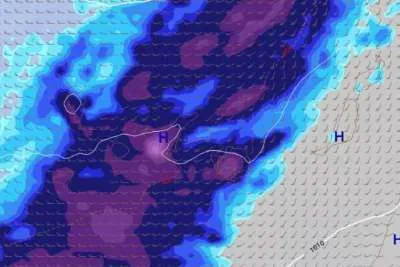Tenerife’s supercomputer is tracking seismic activity in La Palma
- 12-05-2022
- Tenerife
- Canarian Weekly
The Teide HPC (High Performance Computing) supercomputer is the second most powerful in Spain located in the Technological and Renewable Energy Institute (ITER) in Tenerife. It offers researchers, companies of the Technological and Scientific Park of Tenerife, and the University of La Laguna a high-process capacity to improve and extend both the national and international scope of their research.
This amazing piece of technology is the 138th most powerful computer in the world, and is a key piece of the ALiX project, allowing the introduction of infrastructures orientated towards the creation of an industrial network linked to the Information and the Communication Technologies (ICTs) in Tenerife.
Yesterday the Cabildo confirmed that the volcanic activity of La Palma continues to be monitored from the Teide HPC, adding that it is a weather forecasting device that was used during the 85 days of the eruption to help to monitor the activity of the volcano.

The president of the Cabildo, Pedro Martín, said that Tenerife has maintained "a close and constant collaboration with the island, whose volcanic surveillance began long before the eruption on September 19th."
He added that “during this period the supercomputing group of ITER and the University of La Laguna also made the Planclimatic projects available to researchers from both the ITER Environment department and those from Involcan, to provide detailed predictions of the wind regime in the area of the eruption.”
The supercomputer is composed of 1100 Fujitsu servers, with a total of 17,800 computing cores, 36TB of memory, and a high-performance network housed in D-ALiX datacenter which provides high available electrical and cooling infrastructure, and high-speed internet connectivity.
It is being used for wind farm simulations to ascertain the best locations around the island for the next phase of installations. Seems like quite a big computer to follow the weather, wonder what else it can track!


























































